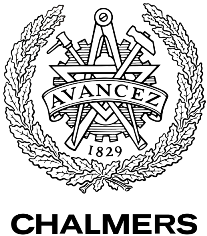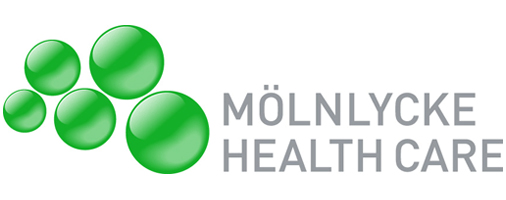Team:Chalmers-Gothenburg
From 2012.igem.org
(→Home) |
|||
| Line 2: | Line 2: | ||
| - | == | + | == Biodetection of human chorionic gonadotropin hormone == |
| - | + | The aim of this project was to develop an idea for a biological construct that could be entered in the International Genetically Engineered Machine (iGEM) competition. For this reason, ''Saccharomyces cerevisiae'' have been planned to be modi�ed in such a way that the yeast cell should function as a biosensor for the human chorionic gonadotropin hormone (hCG). This hormone is produced in the body during pregnancy and consequently, the idea is for the biosensor to function as a simple pregnancy test. To construct the biosensor, the Ste2 receptor in the yeast pheromone signaling pathway will be replaced with the human luteinizing hormone receptor (LH/CG), which is the receptor that hCG binds to with high a�nity. The yeast strain that will be used contains a yeast/human chimeric G� subunit, enabling coupling of the receptor with the already existing pheromone pathway in yeast. Consequently, binding of hCG should result in activation of the pathway. The genes tnaA and fmo, encoding tryptophanase and avin-containing monooxygenas respectively, will also be introduced into the yeast strain. These enzymes catalyze the conversion of tryptophan to indigo. tnaA will be set under the control of the pheromone induced FIG1 promoter and fmo of the constitutive TEF1 promoter. Hence, detection of hCG should result in the production of bio-indigo. In order to ensure hCG to pass the yeast cell wall, the gene CWP2, encoding a cell wall protein, will also be deleted. | |
=== En underubrik === | === En underubrik === | ||
Revision as of 13:39, 20 May 2012
Contents |
Biodetection of human chorionic gonadotropin hormone
The aim of this project was to develop an idea for a biological construct that could be entered in the International Genetically Engineered Machine (iGEM) competition. For this reason, Saccharomyces cerevisiae have been planned to be modi�ed in such a way that the yeast cell should function as a biosensor for the human chorionic gonadotropin hormone (hCG). This hormone is produced in the body during pregnancy and consequently, the idea is for the biosensor to function as a simple pregnancy test. To construct the biosensor, the Ste2 receptor in the yeast pheromone signaling pathway will be replaced with the human luteinizing hormone receptor (LH/CG), which is the receptor that hCG binds to with high a�nity. The yeast strain that will be used contains a yeast/human chimeric G� subunit, enabling coupling of the receptor with the already existing pheromone pathway in yeast. Consequently, binding of hCG should result in activation of the pathway. The genes tnaA and fmo, encoding tryptophanase and avin-containing monooxygenas respectively, will also be introduced into the yeast strain. These enzymes catalyze the conversion of tryptophan to indigo. tnaA will be set under the control of the pheromone induced FIG1 promoter and fmo of the constitutive TEF1 promoter. Hence, detection of hCG should result in the production of bio-indigo. In order to ensure hCG to pass the yeast cell wall, the gene CWP2, encoding a cell wall protein, will also be deleted.
En underubrik
skriver ännu mer här . Amsterdam (nederländskt uttal: [ɑmstərˈdɑm] uttal (info)) (på holländska) är Nederländernas största stad, den officiella huvudstaden (den nederländska regeringen befinner sig dock i Haag), och ligger i provinsen Noord-Holland. Staden har 768 000 invånare och med förorter 2,2 miljoner invånare. Ungefär 50 procent av befolkningen har utländsk bakgrund. Enligt 2008 års Cost of Living Survey ligger Amsterdam på 25:e plats när det gäller dyraste städer att bo i [2].
En underubrik
Staden har över 50 museer och de mest kända är Rijksmuseum, van Gogh-museet, Rembrandtmuseet, Anne Franks hus. Vidare är staden känd för alla sina kanaler och de många cyklar som holländarna använder för att transportera sig med. Amsterdam har den största gamla stan av alla Europas huvudstäder, där det finns många kanaler och små gator.
En underubrik
Amsterdam räknas som världens mest liberala stad. I ingen annan stad är det lika öppet när det gäller lätta droger, sex och prostitution. Stadens mest kända distrikt är Red-light district, hos nederländare känt som de wallen (vallarna). I Amsterdam finns det ungefär 230 så kallade coffee shops [3], ett slags café där det bland annat serveras cannabis, vilket är tolererat i Nederländerna under vissa omständigheter. Amsterdam har även en intensiv gaykultur med två stora områden med många klubbar och barer för homosexuella. Staden är också känd för sin rika cykelkultur; det finns mer än 700 000 cyklar i staden.
Strax utanför Amsterdam ligger en av Europas mest trafikerade flygplatser, nämligen Schiphol vars IATA flygplatskod är "AMS".
 "
"


